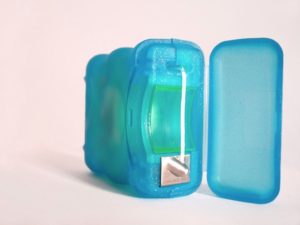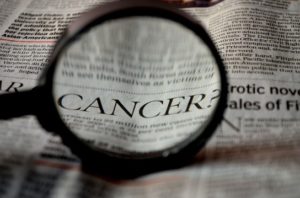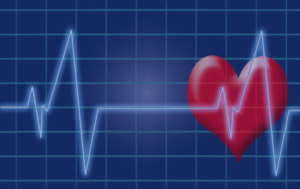Calcium is an important mineral for building strong, healthy teeth, but not everyone can tolerate the lactose found in dairy. Lactose is a sugar found in milk and other dairy products. About 65% of people have reduced ability to process lactose past infancy.

If you have difficulty with lactose but want to ensure you are getting the calcium you need, consider one of these non-dairy sources of natural calcium.
- Canned seafood, such as sardines and salmon, can be a good source of calcium. These inexpensive options actually contain more calcium than their fresh counterparts. Canned seafood contains small, soft, edible bones that are generally unnoticeable but can be a great way to add calcium to a salad or other dish.
- Calcium-fortified juices are available in both orange and cranberry varieties. These juices taste the same as non-fortified options, but contain a substantial amount of calcium. Check the label to ensure it is a calcium-fortified juice.
- Soy, rice, and almond milks offer added calcium and can be used as a milk substitute for many dishes. Experiment with different varieties to determine which flavor you like the most for each use. Try one of these milk alternatives on cereal or use in a cooked dish in place of regular milk. Soy, rice, and almond milks are available in a variety of flavors, including plain, sweetened, unsweetened, vanilla, and other options.
- Beans are a calcium-rich food. Black-eyed peas and baked beans are particularly high in calcium.
- Green vegetables are a good source of natural calcium. Collard, mustard, turnip, and dandelion greens, Chinese cabbage, spinach, kale, okra, and broccoli are all great choices for adding calcium to your diet.
- Nuts, such as almonds, walnuts, hazelnuts, or Brazil nuts are strong sources of calcium. Flaxseeds and sunflower seeds are a great snack or salad additive with calcium. Almond butter, cashew butter, and pumpkin seed butter are a fun and calcium-rich alternative to peanut butter.
- Breakfast cereals are highly fortified with several vitamins and minerals, including calcium. Old-fashioned rolled oatmeal adds calcium to your breakfast as well.
Calcium is important for developing and maintaining strong teeth and bones. If you have trouble with dairy, don’t let that stop you from consuming your recommended amount of daily calcium.
For more information that can improve your oral health, contact our office.







 At times, life can seem to move quickly. Between work, school, sports, and social events, it can seem there is little time left for you and your health. It’s imperative for a healthy mouth and body to always have your next dental appointment scheduled and to prioritize this care. Our team will work with you to find the most convenient day and time for you. If you need to reschedule, we will do our best to accommodate you. Advanced notice of a change is greatly appreciated, whenever possible. Missed appointments without notice are harmful to our practice, as we’ve reserved your appointment time exclusively for you.
At times, life can seem to move quickly. Between work, school, sports, and social events, it can seem there is little time left for you and your health. It’s imperative for a healthy mouth and body to always have your next dental appointment scheduled and to prioritize this care. Our team will work with you to find the most convenient day and time for you. If you need to reschedule, we will do our best to accommodate you. Advanced notice of a change is greatly appreciated, whenever possible. Missed appointments without notice are harmful to our practice, as we’ve reserved your appointment time exclusively for you. Loose teeth, bad breath, and painful, bloody gums – these are among the signs and symptoms of periodontal, or gum, disease. Unfortunately, periodontal disease can also begin without any obvious symptoms. If left undiagnosed or untreated, you could be at risk for irreparable damage to your teeth and gums. The good news is that periodontal disease is preventable. In fact, one of the most effective tools for preventing the disease only takes a minute of your time each day.
Loose teeth, bad breath, and painful, bloody gums – these are among the signs and symptoms of periodontal, or gum, disease. Unfortunately, periodontal disease can also begin without any obvious symptoms. If left undiagnosed or untreated, you could be at risk for irreparable damage to your teeth and gums. The good news is that periodontal disease is preventable. In fact, one of the most effective tools for preventing the disease only takes a minute of your time each day. During a comprehensive dental examination, our team will look for signs of oral cancer. Early detection is key with oral cancer. If caught early, most forms of oral cancer are treatable. Our dental team is trained and educated to identify oral cancer.
During a comprehensive dental examination, our team will look for signs of oral cancer. Early detection is key with oral cancer. If caught early, most forms of oral cancer are treatable. Our dental team is trained and educated to identify oral cancer. The human body is a network of interconnected systems and organs. Unfortunately, issues that impact one particular area of your body can also effect the health and function of other areas. Recently, studies have highlighted evidence for links between gum disease and heart disease.
The human body is a network of interconnected systems and organs. Unfortunately, issues that impact one particular area of your body can also effect the health and function of other areas. Recently, studies have highlighted evidence for links between gum disease and heart disease. Nearly everyone has at least one habit that they wish they could break. Did you know that some of them can affect your oral health? Here are a few common habits and tips for how to break them.
Nearly everyone has at least one habit that they wish they could break. Did you know that some of them can affect your oral health? Here are a few common habits and tips for how to break them.